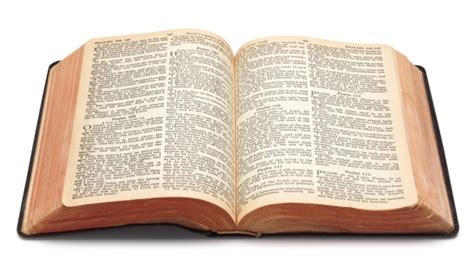Buff Scott Jr.
Junior
- Joined
- Jul 31, 2023
- Messages
- 379
- Reaction score
- 119
- Points
- 43
The Early Ekklesia’s Anatomy vs. The
Modern-Day Church
[Is the Modern-Day Church akin
to what Jesus set in order?]
Let’s Find Out
Modern-Day Church
[Is the Modern-Day Church akin
to what Jesus set in order?]
Let’s Find Out
When we reflect upon the early ekklesia and compare it to the contemporary church, we can easily see how widely separated they are. A great gulf lies between them. The early ekklesia was not composed of sects, denominations, churches, or religious parties. Except for the “petite” factions at Corinth (1 Cor. 1:12-13), religious parties were non-existent within the universal body of believers. God’s colony of redeemed sinners functioned as a humane and evangelistic community. Their meetings were informal but orderly, serious and alive, responsive, and mutually managed. Ours are “services,” as at a funeral, largely non-responsive and non-stimulating.
Pew-warmers have little or no recourse except to sit silently and be indoctrinated by an elitist. As a result of inactivity and lack of mutual participation, commoners experience little or no spiritual growth. As growth is stifled, most remain spiritual adolescents. Elitists who run the show have been hired for a salary and can be fired by “stepping over the line” and speaking things “contrary to the Word of God,” which, when translated, means to turn a little to the right or to the left of the party’s doctrinal platform. The doctrinal platform is the various conceptions of the “Word of God” held by those who keep the Corporation running smoothly, such as dictatorial Elders, Pastors, Priests, or Church Boards.
It is strikingly clear that the early meetings were bereft of pulpits, collections to buy and maintain flashy edifices and to keep an elite orator vocationally afloat, ritualistic nonsense, and pew-sitters. Their environment was family-like. Our gatherings resemble formal business meetings, where business or “worship” doesn’t begin until the hands on the clock are at a certain crossroads. Our overall anatomy mirrors a Corporation, an Institution, not a compassionate community of concerned ones.
What dissimilarity! We have retrogressed, not progressed. We have traded the holy for the common, the celestial for the terrestrial, the spiritual for the materialistic, the sacred for the plain. Yet there are many receptive and seeking hearts within the corridors of the modern church. God will deliver them, if they are willing to remove their soiled garments and replace them with garments of reconciliation. His children no longer need wallow in the partisan litter of the Religious Establishment, for God will raise up reformers to rescue His elect. He always has. He always will.
But it isn’t likely He will penetrate the divisive armor of those whose hearts are solidly enslaved by the Institutional church, and whose deep-seated infirmity is “Mad Church Disease.” The divisive spirit is a work of our carnal nature. It is reflected thusly, “We are right and others are wrong. We are the only church Jesus founded.”
As long as this separatist spirit lingers within the contemporary church, she will never be able to apply a healing balm to “Mad Church Disease.” Freedom in Jesus will always escape those who parrot this mindset and exhibit a cliquish spirit. It is indeed a rarity to find freedom in the contemporary church. The reason is that the party line must be parroted, her precepts supported, her traditions preserved, and the “church system” idolized. If we veer a little to the right or lean a little to the left, we will soon be verbally disciplined and told to shape up or ship out—or worse.
This is not freedom. It is bondage. To find a man who is truly free to speak his mind and heart while employed by a church is like looking for shelter in a hailstorm. Even pew-sitting peasants are not allowed the freedom to speak their heart and mind without ecclesiastical reprisal. There are, however, many receptive and loving hearts who are caught up in the web of partisan religion. They need to be freed.
But to be truly free in Jesus we need to cast off our partisan shackles and disavow all sectarian systems—that is, all religious parties that have subjugated us. This I have personally done. This I will not undo. No church or religious party upon the face of planet Earth has one bit of control over my life, my mind, or my beliefs any longer. I will no longer be a bondservant to any of them. My only Master is Jesus—and He alone. I will forever be His slave. I refuse to bow to any other. “Give me freedom or give me death” will always be my cry. For without freedom to think, to dissent, to investigate, and to question, our walk with the Lord and voyage to Heaven might be difficult to negotiate.
Pew-warmers have little or no recourse except to sit silently and be indoctrinated by an elitist. As a result of inactivity and lack of mutual participation, commoners experience little or no spiritual growth. As growth is stifled, most remain spiritual adolescents. Elitists who run the show have been hired for a salary and can be fired by “stepping over the line” and speaking things “contrary to the Word of God,” which, when translated, means to turn a little to the right or to the left of the party’s doctrinal platform. The doctrinal platform is the various conceptions of the “Word of God” held by those who keep the Corporation running smoothly, such as dictatorial Elders, Pastors, Priests, or Church Boards.
It is strikingly clear that the early meetings were bereft of pulpits, collections to buy and maintain flashy edifices and to keep an elite orator vocationally afloat, ritualistic nonsense, and pew-sitters. Their environment was family-like. Our gatherings resemble formal business meetings, where business or “worship” doesn’t begin until the hands on the clock are at a certain crossroads. Our overall anatomy mirrors a Corporation, an Institution, not a compassionate community of concerned ones.
What dissimilarity! We have retrogressed, not progressed. We have traded the holy for the common, the celestial for the terrestrial, the spiritual for the materialistic, the sacred for the plain. Yet there are many receptive and seeking hearts within the corridors of the modern church. God will deliver them, if they are willing to remove their soiled garments and replace them with garments of reconciliation. His children no longer need wallow in the partisan litter of the Religious Establishment, for God will raise up reformers to rescue His elect. He always has. He always will.
But it isn’t likely He will penetrate the divisive armor of those whose hearts are solidly enslaved by the Institutional church, and whose deep-seated infirmity is “Mad Church Disease.” The divisive spirit is a work of our carnal nature. It is reflected thusly, “We are right and others are wrong. We are the only church Jesus founded.”
As long as this separatist spirit lingers within the contemporary church, she will never be able to apply a healing balm to “Mad Church Disease.” Freedom in Jesus will always escape those who parrot this mindset and exhibit a cliquish spirit. It is indeed a rarity to find freedom in the contemporary church. The reason is that the party line must be parroted, her precepts supported, her traditions preserved, and the “church system” idolized. If we veer a little to the right or lean a little to the left, we will soon be verbally disciplined and told to shape up or ship out—or worse.
This is not freedom. It is bondage. To find a man who is truly free to speak his mind and heart while employed by a church is like looking for shelter in a hailstorm. Even pew-sitting peasants are not allowed the freedom to speak their heart and mind without ecclesiastical reprisal. There are, however, many receptive and loving hearts who are caught up in the web of partisan religion. They need to be freed.
But to be truly free in Jesus we need to cast off our partisan shackles and disavow all sectarian systems—that is, all religious parties that have subjugated us. This I have personally done. This I will not undo. No church or religious party upon the face of planet Earth has one bit of control over my life, my mind, or my beliefs any longer. I will no longer be a bondservant to any of them. My only Master is Jesus—and He alone. I will forever be His slave. I refuse to bow to any other. “Give me freedom or give me death” will always be my cry. For without freedom to think, to dissent, to investigate, and to question, our walk with the Lord and voyage to Heaven might be difficult to negotiate.
In 1973, I composed a poem which contains this verse:
“Come, now, my fellow believers,
Consider the divisive infirmities of each other;
And how they can be reversed and set asunder,
By offering our love and helping one another.”
“Come, now, my fellow believers,
Consider the divisive infirmities of each other;
And how they can be reversed and set asunder,
By offering our love and helping one another.”

